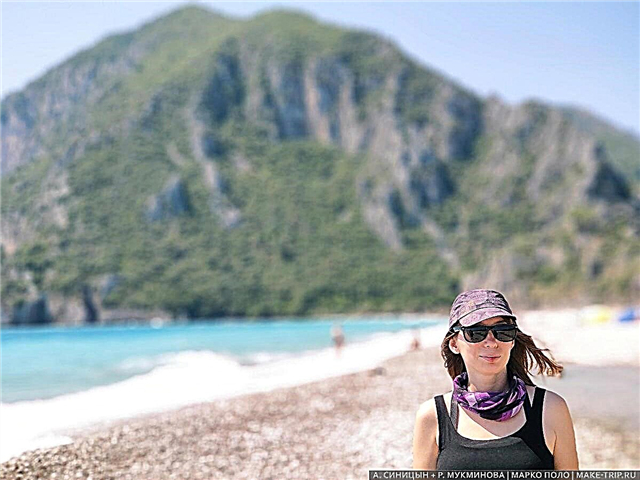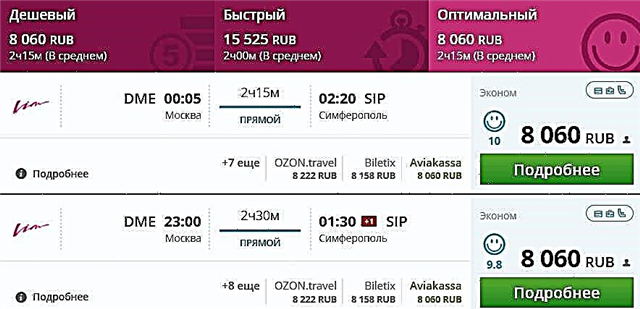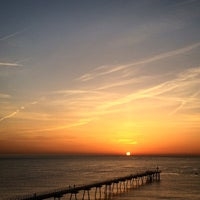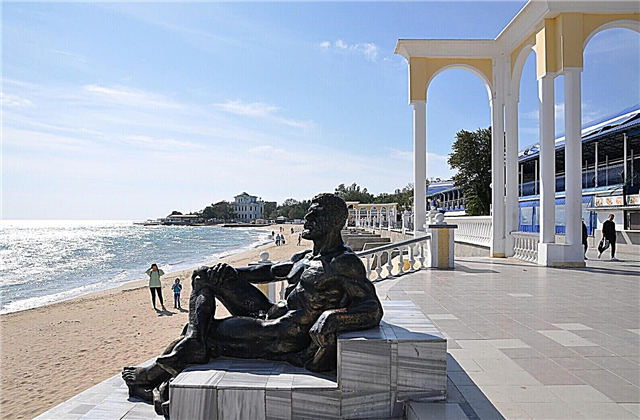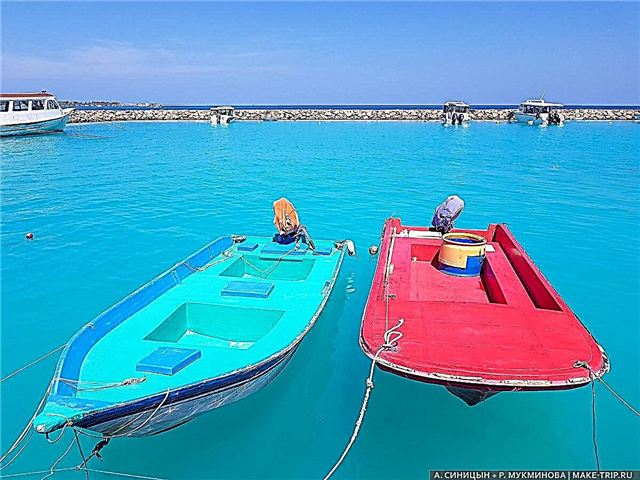Penza is a city in the European part of Russia. There are traditional military monuments and tributes to outstanding personalities, but they are often made in an unusual manner. For example, the monument to the participants in the war in Afghanistan, erected in many cities of Russia, is made in the form of a memorial complex, the center of which can be reached through the "Afghan Gate" arch.
Meyerhold's sculpture depicts the director moving towards a wall-mounted door. Modern monuments are also interesting, and Penza does not hesitate to borrow the best from other countries. This is how the “Traffic Light Tree” appeared in the city, similar to the London one. And this is not the limit to the creativity of local sculptors.
Historical and modern monuments of Penza
List of the most famous monuments and sculptures of the city.
Monument to Military and Labor Glory
It has been located on Victory Square since 1975 and is dedicated to the locals who showed their best qualities during the Second World War. A sculptural group is installed on an artificial hill: Motherland with a child on her shoulder and a warrior-defender. Here is the star-shaped bowl for the Eternal Flame. Granite flights of stairs lead to the monument. In the niche of one of them, the Book of Memory is kept, in which there are more than 100 thousand names of the victims.

Glory Monument "Sprout"
One of the main symbols of Penza has been standing on the embankment of the Sura River since 1967. Its appearance was timed to the celebration of the 50th anniversary of the October Revolution. The name "Rostock" did not appear immediately: this is how the locals began to call the 25-meter stele because of its unusual appearance. A group of authors, including local sculptor Apollo Fomin and honored artist Alfred Oya, worked on the creation of the monument.

"The first settler"
A monument with this name has been standing on Kirov Street in the historical part of the city since 1980. Previously, there was a city fortress on this place. The first settler with a spear and a plow, as well as his horse, are made of bronze and placed on a small pedestal. The monument symbolizes two important occupations of local residents - agriculture and military service. Nearby there is an observation deck surrounded by a fence.

"Afghan gates"
The memorial complex belongs to the territory of Marshal Zhukov Square. The composition was opened in 2010. To get to the Eternal Flame and the central part of the monument, you need to pass a large arch decorated with high reliefs. Thanks to her, the complex received the name "Afghan Gates". The plates bear the names of the Penza residents who died in Afghanistan. All the warriors-internationalists are also remembered here.

"Katyusha"
The monument to the famous artillery weapon was erected in 1982 near the local history museum. Subsequently, it was decided to put a tank and a cannon here, so the Katyusha moved to the Penzmash plant. During the war years, this enterprise was redesigned for the manufacture and repair of military equipment, so the place became a landmark for the city. The monument is a real "Katyusha", placed on a massive pedestal.

Monument to Karl Marx
The plaster sculpture by Yefim Ravdel is the first monument to a German thinker in Europe. It only stood for a week in 1918. In the next 40 years, repeated attempts were made to create a new monument in honor of Marx, but they were unsuccessful. Only in 1960 a bust appeared on Sovetskaya Square, created by sculptor Sergei Alyoshin and architect Grigory Zakharov.

Monument to Penza policemen
Also referred to as a monument to the district police officer. There is no other similar monument in Russia. The opening took place in 2007. A bronze statue of a Soviet policeman stands on a pedestal on Nekrasov Street. Dressed as a guardian of order in a post-war uniform. The prototype for the creation of the monument was a real person - Captain Grigory Shelkov. Many people in the city knew and respected this policeman for his adherence to principles and diligence.

"Fighter-interceptor Su-9"
A real combat aircraft is fixed on an inclined stele, which is about 20 meters high. Thanks to this shape, the effect of flight is created. The attraction looks especially advantageous from a distance. The decision to erect the monument was made in 1980, at the same time the Su-9 was delivered to Penza from the Samara region. A year later, he took his place at the intersection of Borodin Street and Pobedy Avenue.

Monument to V.I.Lenin
It is located near Lenin Square in the center of a specially laid out public garden. The leader of the proletariat is depicted in full growth. When creating the monument, the proportions were deliberately violated in order to give Lenin a more decisive look and to emphasize some features. The sculpture's pedestal is a four-sided granite pylon. Architect Nikolai Brovkin and People's Artist of the USSR Nikolai Vuchetich are the authors of the monument.

"Penziak fat-five"
The monument was created based on the history of Alexander Suvorov. When crossing the Alps, the Penza soldiers put on double-heeled socks and, unlike everyone else, did not wipe their feet. In their direction, the commander threw the phrase: "Well done, fat-heeled Penzyaks!" An art object commemorating this event was opened in 2018 on Moskovskaya Street. Its authors are local sculptor German Feoktistov and artist Valery Kuznetsov.

Monument "Globe"
An important part of urban architecture, a recognizable symbol of Penza. The height of the engineering structure is 13 meters, and the diameter is about 8 meters. The globe represents world peace. The model clearly shows convex continents, with the exception of Antarctica. The installation took place in 1972 to mark the 50th anniversary of the founding of the Soviet Union. The monument can be found on Druzhba Square at the intersection of three streets.

Bust of M. Yu. Lermontov
Located on the street of the same name. Created thanks to the persistence of the Lermontov Society, which has existed since 1892. It is considered the second monument to the writer in Russia. A bronze bust by the sculptor Ilya Gintsburg stands on a granite pedestal. The annual "Penza Spas", as well as several events related to Lermontov, are held in the park near the attraction.

Monument to V.E. Meyerhold
Opened in 1999. This is how the city celebrated the 125th anniversary of the theater reformer. The monument is unusual in its execution. The sculptor Yuri Tkachenko depicted Meyerhold ascending the steps to a door built into a brick wall. In the past, this building belonged to the family of Vsevolod Emilievich. The sculptural composition is made of bronze and very accurately conveys the image of the director described by his contemporaries.

Monument to V.G.Belinsky
Installed near the Drama Theater in 1954. The bookmarking of the landmark 6 years earlier had become a real cultural event in the city and brought together many eminent writers. The monument was cast at the Leningrad plant. The author of the project is Evgeny Vuchetich. The pedestal is faced with granite, and the monument itself is a full-length bronze sculpture of Belinsky. The total height is over 10 meters.

Broken Star
The memorial is dedicated to the soldiers who died in Afghanistan. The slabs show the names of not only those who did not return from the war, but also those who died in their homeland from wounds and the consequences of concussions. In 2011, the monument was damaged due to bad weather. It was recreated in its former form, but made of a more durable material, and installed on Pobedy Avenue. In 2013, the "Belfry" was added to the composition - a symbolic image of the chapel.

"Lady with a dog"
The monument has nothing to do with Chekhov's work. The composition is a tribute to women who owned a nearby house on Volodarsky Street. Since their images have not survived, the image turned out to be collective.Although the monument lacks such a strong semantic meaning as some other sights of the city, locals have repeatedly chosen it among the best decorations in Penza.

"To the Glory of Russian Weapons"
The memorial complex has been built over the course of several years. The work was fully completed in 2017. Several bas-reliefs are installed on a wide granite pedestal. They depict important milestones in the country's history associated with military affairs. Among famous personalities here you can recognize Suvorov, Alexander Nevsky, Stalin. The author of the project is local sculptor Alexander Bem.

"Order of Victory"
The monumental building was opened in honor of the heroes of the Great Patriotic War. A huge prototype of the Order of Victory is placed on three tall columns. A circle with the image of the Moscow Kremlin is inscribed in the center of the star. There is a large space for flower beds in front of the landmark. Flowers are planted here in spring. Sometimes the plants form the lettering or colors of the flag. The monument is located on Victory Avenue.

"Dove of peace"
The monument appeared at the beginning of Mira Street in 1965. He is part of the fashionable movement of that period, which emerged after the Second World War. The dove was chosen as the symbol of the Peace Congress. His sketch was drawn by Pablo Picasso. After 16 years, Penza received its landmark on this topic. The wings of the dove are especially noteworthy. The words inscribed in them add up to the phrase "Peace to the world."

Bust of A.S. Pushkin
Installed in 1950 on Pushkin Street. The bust was created according to the project of the sculptor Vladimir Domogatsky, who had already died by that time. Initially, the monument was made of concrete, later it was replaced by a similar in appearance, but already granite version. The pedestal is almost equal in width to the bust, which creates the appearance of the unity of the form. Around there is a square, where themed events are held annually on the poet's birthday.

Monument to the Ulyanov family
In Penza there is a Ulyanov Museum on Krasnaya Street. In 1969, a monument to the parents of Vladimir Ilyich Lenin was unveiled in his park. Ilya Nikolaevich was a teacher and a real state councilor. Maria Alexandrovna in her maiden name bore the surname Blank. The spouses are depicted sitting on a bench, as if the sculptor had caught them while talking. The monument stands on a high pedestal that stands out from the composition.

"Seeing off"
It is located on Kuibyshev Street, where the recruiting station was located during the war. The sculptural composition consists of three hugging figures. A man says goodbye to his wife and son, going to the front. If his loved ones are depicted as emotional, then the soldier himself is shown detached and calm. The monument to the work of Vladimir Kurdov was opened in 1989. The verses of Lyudmila Yashina are carved on the stone nearby.

Monument to the jeweler
Also called "The Final Touch". The sculptors are Valery Kuznetsov and German Feoktistov. Since 2013, a bronze jeweler has been sitting on a chair on the main shopping street of Penza. He gazes intently at the finished ring, as if trying to bring it to perfection. The composition is complemented by several interesting details, including a dedication to the real local jeweler Vladimir Lomonosov.

Clock "Cuckoo"
The monument has been located near Fountain Square since 1974. Three factories were involved in the manufacture of the clock tower at the top. The mechanism was brought from the Serdobsky sentry, the crystal columns - from the Nikolsky glassworks, and the main structure was made at the Penza diesel engine. "Cuckoo" suffered from time and vandals, so it had to be restored. It was reopened in 2012.

Monument to Y. Moiseev
Installed at the Palace of Sports in 2006. Yuri Ivanovich is the first hockey player of the USSR national team from Penza. He has had an impressive career as a player and coach. He was awarded several state orders. At the opening of the monument to Moiseev, his son came, as well as famous hockey veterans. The three-meter bronze sculpture was created in less than 6 months by architect Dmitry Dimakov and sculptor Alexander Khachaturyan.

"A family"
The monument was erected in a public garden in the central part of the city in the 50s. It quickly lost its original appearance and until the beginning of this century was in a deplorable state. Its restoration was started in 2006. The composition was entered into the register of monuments only 2 years later. The new status allowed for a full-scale reconstruction. The figures of the parents and their small child received a second life.

Steam locomotive-monument Su 213-89
The site near the bus station was chosen as the installation site. The monument is dated 1985. Su 213-89 produced in 1938 at the Kolomna plant. A steam locomotive similar to it was put on the rails about 3 thousand. During the Great Patriotic War, they played an important role in the transportation of medical teams and wounded soldiers. The monument is in perfect condition and is closely watched.

"Traffic light tree"
Penza residents adopted the experience of installing the monument from the British. The local “tree” appeared on Suvorov Street in 2011. It was collected from 36 decommissioned traffic lights. You cannot regulate movement with this art object, but you can decorate the area. At first, they wanted to activate it only on holidays, but decided to do it every evening. Now "tree" lights up together with other lanterns in the area.

Box "Russian folk proverbs"
There is a bronze monument by the Penza sculptor Valery Kuznetsov on Pushkin Street. The weight of the box is about 600 kg, the height is 2.5 meters. A cannon man stands at the top with his cannon and leans on a large key to the city. This artifact has been passed down from generation to generation. The sides of the box are decorated with bas-reliefs. They depict proverbs, such as a scene on the theme "You can't catch a fish from a pond without difficulty."

Monument to the Turner
The opening took place in 2016 in the park of the Zavodskoy district. The prototype for the creation of the monument is Viktor Kondrashin, who worked all his life in the factory shop. At the same time, Alexander Khachaturian tried to create a collective image of a worker. The sculptor depicted him together with the machine, so the monument turned out to be massive. The machine is worked out to the smallest detail, which emphasizes the subtlety of the turner.


